
November Birthstones: Unveiling the Citrine & Topaz Duo
The two gemstones designated as November birthstones are citrine and topaz, usually yellow topaz. Both stones, quite similar-looking, radiate the autumnal colors of the November season.
The month of November gets its name from the Latin novem, meaning “nine,” because it was the ninth month in older Roman calendars. Anglo-Saxons called November Blōtmōnaþ, blót meaning “blood sacrifice.”
During November, ancient Romans celebrated festivals like Ludi Plebeii (Plebeian Games), Epulum Jovis (honoring Jupiter), and Brumalia (winter solstice festival).
Today, popular November holidays include Thanksgiving and Veterans Day in the US, along with the Christian All Saints’ Day and the Mexican Day of the Dead.
Generally, the month symbolizes transition, unity, and gratitude.
Do the November birthstones parallel this symbolism? Find out as we go over the history, meanings, properties, and value of topaz and citrine!
 Pictured above: Madeira citrine (left) and blue topaz (right)
Pictured above: Madeira citrine (left) and blue topaz (right)
Historical & Cultural Significance of November Birthstones
November has two birthstones: topaz and citrine. But why are there two birthstones for November?
The short answer: topaz was the traditional November birthstone, and citrine was added later.
The slightly longer answer:
Birthstones began in the 1st and 5th century, inspired by Biblical lists of twelve gemstones. At this time, topaz was designated for November.
Wearing one’s birthstone began in the 1500s, but formalized modern birthstone lists kicked off in 1870, when Tiffany & Co released a pamphlet of “Gregorian Birthstone Poems.” The November poem discussed topaz.
The first standardized lists, created by the National Association of Jewellers (now Jewellers of America) in 1912 and the National Association of Goldsmiths in 1937, both listed topaz for November.
In 1952, the Jewelry Industry Council of America amended the 1912 list, adding citrine for November. This may have been because citrine was more affordable than topaz.
The most up-to-date UK list has only topaz for November, while the most recent US list has topaz and citrine.
What is the most common birthstone for November? The history of topaz makes it more recognizable as the “classic” November birthstone, but citrine is gaining popularity. Plus, citrine is more abundant than topaz.
But how do citrine and topaz’s history compare?
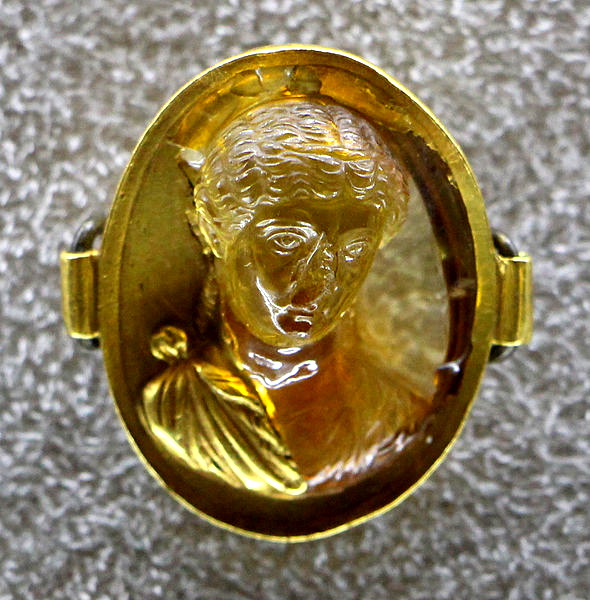 Pictured above: Ancient Roman glyptic with head of Faustina carved in citrine, 2nd century, restored in gold in 16th century; Displayed in Museo archeologico nazionale (Florence) | Image credit: Sailko, CC-BY-SA-3.0
Pictured above: Ancient Roman glyptic with head of Faustina carved in citrine, 2nd century, restored in gold in 16th century; Displayed in Museo archeologico nazionale (Florence) | Image credit: Sailko, CC-BY-SA-3.0
Citrine’s Historical Connections
The first recorded civilization to use citrine gemstones was ancient Greece. Greeks decorated with citrine around 300 to 150 BC and connected the November birthstone to harvest goddess Demeter. Ancient Romans carved citrine intaglios and priests wore carved citrine rings.
Meanwhile, ancient Egyptians associated citrine with their goddess of war, Sekhmet, who protected pharaohs and offered healing powers to her followers. They also associated the November stone with their sun god, Ra.
Chinese emperors reportedly wore citrine jewelry to broaden their minds and attract prosperity. Scottish soldiers put citrine on their weapons, sometimes even creating hilts for their swords entirely from citrine.
The name “citrine,” however, didn’t come into use until 1385, when it was used for various yellow gemstones. One of those gemstones was topaz, confused with citrine for centuries. Though some called citrine “yellow quartz,” others called it “gold topaz” or “Spanish topaz.”
In 1546, “citrine” was established for yellow quartz specifically, likely from the French citron, meaning “lemon.”
In modern times, citrine popularity skyrocketed in 1920 to 1930s Art Deco styles, boosted by citrine jewelry appearances on celebrities like Greta Garbo.
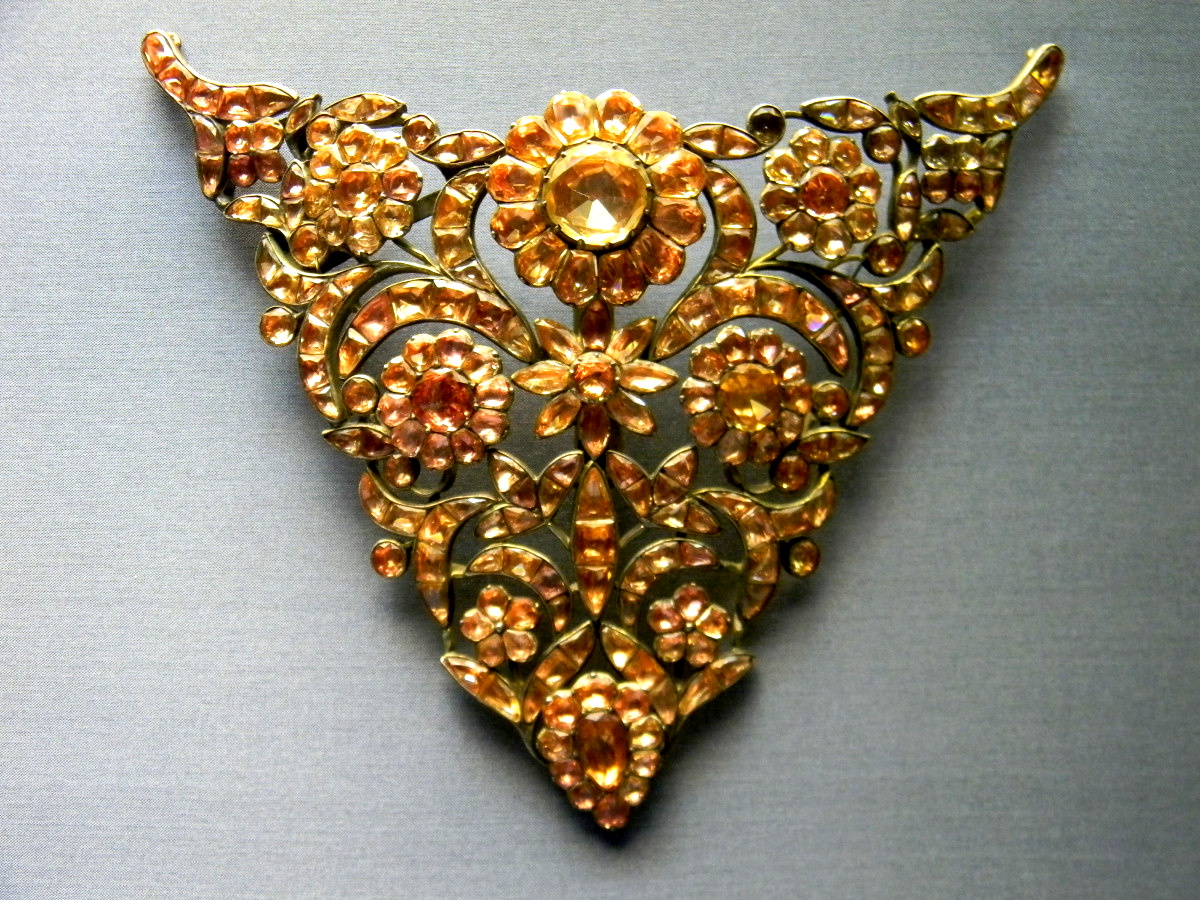 Pictured above: 18th century Portuguese "devant de corsage" or stomacher made of topazes; Displayed at National Museum of Ancient Art, Lisbon | Image credit: Manederequesens, CC-BY-SA-4.0
Pictured above: 18th century Portuguese "devant de corsage" or stomacher made of topazes; Displayed at National Museum of Ancient Art, Lisbon | Image credit: Manederequesens, CC-BY-SA-4.0
Topaz’s Legacy in Various Cultures
The name “topaz” likely comes from the island of Topazios, what Greeks called present-day Zabargad. However, this island didn’t produce topaz but peridot, which was formerly mixed up with topaz, similar to confusions between topaz and citrine.
Another theory about topaz’s name is from Sanskrit terms topas or tapaz, meaning “fire.” Sanskrit was the language of ancient India, where Hindus believed topaz was protective and sacred as one of the gems in the wish-granting Kalpa Tree and the astrologically powerful Navaratna.
Ancient Egyptians connected topaz to the sun god, Ra, and his golden radiance. Similarly, ancient Romans associated topaz with their sun god, Apollo, and Greeks tied topaz to sky god Jupiter. In the Navaratna mentioned above, topaz also represents the planet Jupiter.
Some Romans believed the November birthstone would change colors when held near poisoned refreshments. Similarly, other ancients thought topaz’s color would intensify according to the moon’s phases or treat illness during full moons.
In Christianity, topaz is associated with Saint Matthew and his religious passion. The November birthstone is also mentioned as one of the High Priest’s Breastplate stones and New Jerusalem stones.
Geology & Composition of November Birthstones
Starting with citrine, this November birthstone is a form of quartz, making its composition silicon dioxide and its Mohs hardness 7.
This type of quartz forms in geodes, igneous rocks, and metamorphic rocks. Often, citrine is created by heat-treating other quartz varieties, but more on that later.
Most citrine birthstones come from Brazil, but other top sources include Bolivia, Uruguay, Madagascar, Mexico, and Spain.
Moving to topaz, this stone is an aluminum fluorine silicate with 8-level Mohs hardness. It forms in various underground areas, but it’s usually found in silica-rich igneous rocks.
Like citrine, the top source for facetable topaz stones, including imperial topaz, is Brazil. Yellow topaz is also known from Brazil, Germany, and Sri Lanka.
 Pictured above: Faceted citrine with oval shape
Pictured above: Faceted citrine with oval shape
Citrine's Warm Glow: Unveiling the Sunlit Gem
Arguably the most popular yellow gemstone, citrine’s color comes from traces of iron impurities. The amount of iron leads to different citrine shades, including pale yellow, golden-yellow, orange, reddish-orange, and brownish-orange.
However, natural citrine is rare, especially in good coloring. Therefore, most citrine November birthstones are the product of heating amethyst or smoky quartz.
The amethyst’s original coloring can influence how bright or dull the citrine’s color will be. Heated smoky quartz stones tend to become lighter yellow citrines.
Natural citrine crystals are often pale yellow with smokiness throughout.
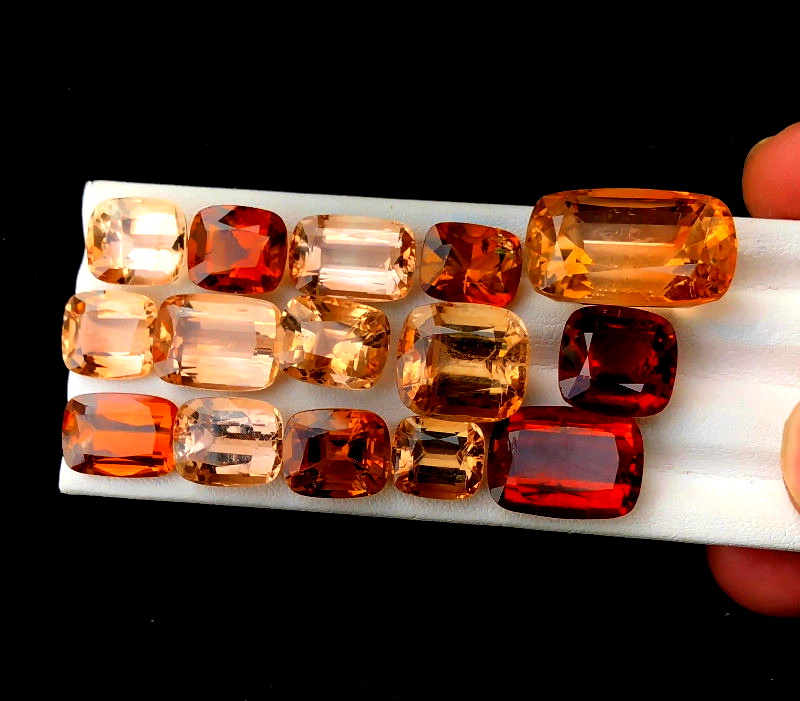 Pictured above: Heat-treated parcel of topaz stones in warm colors
Pictured above: Heat-treated parcel of topaz stones in warm colors
The Multifaceted Beauty of Topaz
Unlike citrine, topaz is available in a wide range of colors. However, many yellow gemstones were historically referred to as “topaz,” and yellow topaz was believed to be the only yellow gem for centuries.
Today, blue topaz is more popular. But is the November birthstone blue or yellow? Most gemologists specify yellow or golden topaz for November, as blue topaz is associated more with December.
Because topaz is allochromatic, its colors come from impurities. The most common color-causing impurity is iron, which leads to various colors — like brown, yellow, and blue — depending on the wavelength absorption. Chromium impurities cause pink to purple colors.
Natural topaz crystals are usually colorless, pale yellow, orange, or brown. Blue topaz is the most popular, but it’s usually created by artificial irradiation treatment.
Other notable treated topaz varieties include mystic, azotic, and center-fused topaz.
The most valuable topaz November birthstone is imperial topaz, named for its discovery in Russia and association with Russian czars. This variety has vibrant orange, pink, or coral coloring with reddish pleochroism.
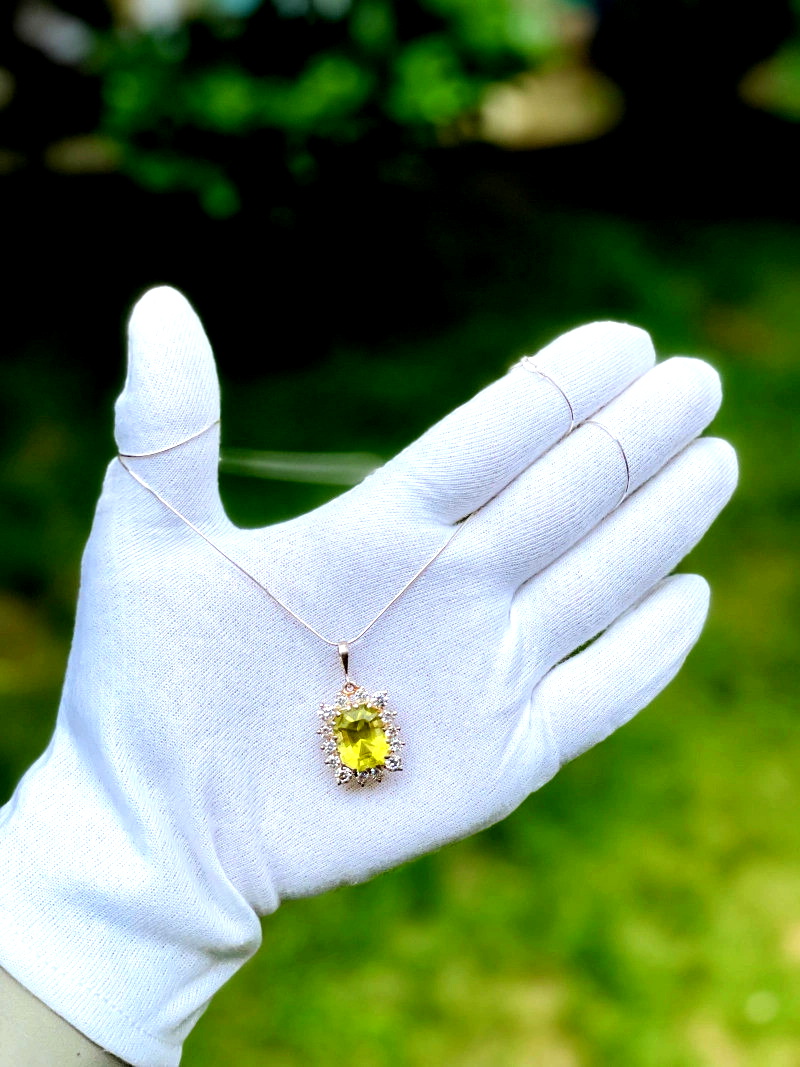 Pictured above: Necklace with citrine surrounded by white topaz stones
Pictured above: Necklace with citrine surrounded by white topaz stones
Evaluating Quality: Citrine and Topaz Characteristics
Both citrine and topaz November birthstones vary in quality and value based on their color, cut, clarity, carat weight, and treatments.
Color
Citrine: While citrine’s most popular coloring is reddish-brown or brownish-orange, the most valuable citrine colors are vibrant yellow to reddish-orange with no brown undertones. One example is the deep reddish-orange Madeira citrine.
Topaz: The most valuable, rarest topaz color is red or pink. The second-highest is imperial topaz, which usually has red overtones. Uniform coloring in topaz is a value booster.
Blue is also rare naturally, but blue topaz birthstones created with treatments are abundant. Yellowish-brown to orange topaz is called “sherry topaz” or “precious topaz,” despite topaz being a semi-precious gem.
White topaz is the most affordable and a common alternative to diamond in jewelry like engagement rings.
Cut
Citrine: High-quality citrine gems are often faceted, with both standard and custom shapes available in various sizes. Lower-quality specimens may become cabochons or beads. Many stunning citrine birthstones are carved.
Topaz: Gem cutters must consider a topaz crystal’s coloring, size, and high refractive index (meaning better sparkle) when choosing the best cut. That said, topaz gems are available in virtually every faceted cut.
Emerald cuts are common for bringing out topaz’s color and size. Oval and pear shapes help enhance an imperial topaz’s red pleochroism.
Like citrine, topaz birthstones can also become cabochons, carvings, or beads.
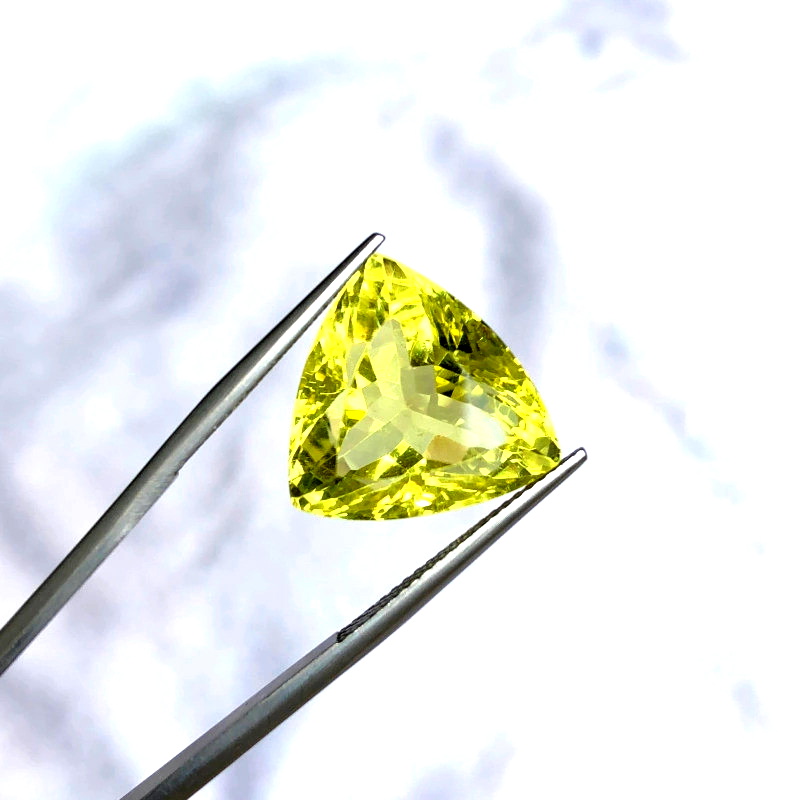 Pictured above: Faceted greenish-yellow citrine with trillion shape
Pictured above: Faceted greenish-yellow citrine with trillion shape
Clarity & Transparency
Clarity describes the degree of visible inclusions, which lower a stone’s transparency and value. Both November birthstones range from transparent to opaque, with more transparent options commanding higher prices.
Citrine: Citrine is often found without visible inclusions, so their presence lowers the value. Color-zoning also lowers value.
Topaz: Topaz stones vary in clarity by their color. Blue, yellow, and imperial topaz are often found without visible inclusions (Type I clarity).
Carat Weight
Citrine: Luckily, citrine gems come in an array of sizes. Stones above 10 carats will have slightly higher price-per-carat rates but are still affordable.
Topaz: The price-per-carat of topaz gems can vary by color. The rate for imperial topaz gems will jump at 1, 3, and 3+ carats. Pink topaz price-per-carat jumps over 3 carats. Other topaz colors will have higher price-per-carat rates over 10 carats.
 Pictured above: Faceted mystic topaz created with surface-coating treatment
Pictured above: Faceted mystic topaz created with surface-coating treatment
Treatments
Citrine: As mentioned, most citrine gems available have been treated. Smoky quartz and amethyst are heated, while clear quartz may be heated and irradiated. Some natural citrines are heated for deeper coloring.
Topaz: Typical topaz treatments are heat and/or irradiation, which enhance or change the birthstone’s color. Certain colors are more stable — treated precious topaz usually won’t fade, but brown topaz is often light-sensitive.
Surface-coating or diffusion treatments create mystic, azotic, and center-fused topaz.
Shifting gears, what is the spiritual meaning of the November birthstones?
 Pictured above: Citrine carved into floral shape
Pictured above: Citrine carved into floral shape
November Birthstone Meanings: Cultural Symbolism & Beliefs
A common thread among both November birthstones’ meanings involves light: warmth, the sun, and energy. But each stone carries its own unique metaphysical significance.
Citrine Birthstone Meanings
Today, citrine generally symbolizes abundance, warmth, and manifestation.
Ancient beliefs about citrine healing stones included powers to ease anger and attract prosperity. Many cultures believe citrine helps manifest wealth and success, nicknaming it “The Merchant’s Stone” or “Success Stone.”
Others thought citrine attracted love, confidence, and intellect, while dispelling negativity.
Another common belief was for protection. Hindus thought citrine protected their wellbeing and beauty. Ancient Celts and Scots would wear protective citrine talismans for avoiding snake bites and plagues.
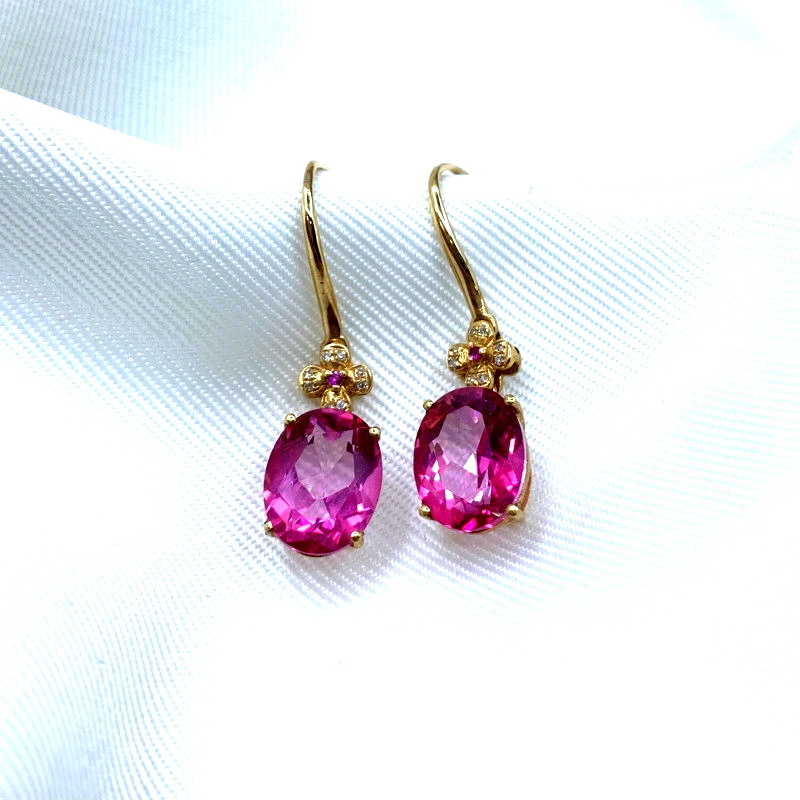 Pictured above: Pink topaz earrings with accent diamonds
Pictured above: Pink topaz earrings with accent diamonds
Topaz Birthstone Meanings
Modern interpretation of topaz’s meaning is that it represents strength, wealth, and courage.
Ancient uses for topaz included increasing strength, harnessing the sun’s power, and protecting one from harm. Renaissance Europeans thought these November birthstones would end curses and soothe anger.
African shamans thought topaz attracted wealth. Early Christians saw topaz as symbolic of virtue, faith, and the act of loving God and your neighbor.
Historically, topaz stones engraved with falcons were believed to grant you good fortune from royals and treat eye disease.
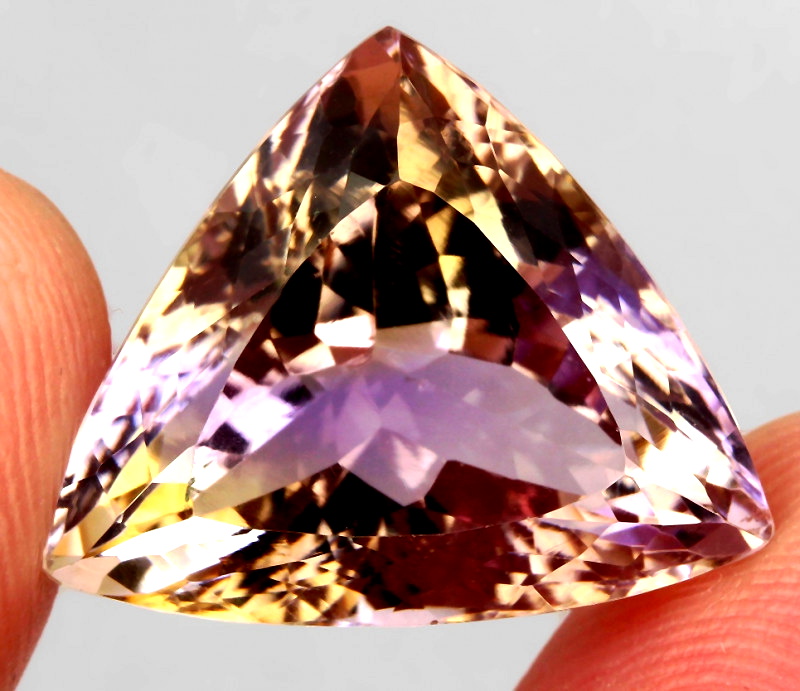 Pictured above: Faceted ametrine
Pictured above: Faceted ametrine
Alternative November Birthstones
Though yellow topaz and citrine are traditional, you have many November birthstone options.
For one, you can choose another topaz color, like the more accessible blue topaz. Pink topaz is another great option, resembling pink diamond at a lower price point.
You can even opt for ametrine, a purple and yellow combination of amethyst and citrine.
November also has some alternative yellow birthstones, like:
Smoky quartz
Astrologically, what birthstone is for November Scorpios? November-born Scorpios (before the 22nd) can benefit from coral and shungite.
November-born Sagittarius signs (after the 22nd) can benefit from beryl, amethyst, or lapis lazuli.
Personalized November Birthstone Gifts
If you’re deciding on November birthstone jewelry, you might wonder which is better: topaz or citrine? In short, it depends.
Topaz fares better in durability and color diversity, but citrine is more affordable and diverse in size.
If you’re buying a November-born loved one a birthstone gift, there are plenty of options! You can incorporate the gem into a November birthstone ring, pendant, bracelet, or cufflinks. You can even opt for carved or rough November birthstone decor.
Want to personalize it more? You could have the stone engraved, paired with your own birthstone, or even designed around jewelry incorporating chrysanthemum, the November birth flower.
Outside of birthdays, citrine is the traditional 13th wedding anniversary gem, while topaz commemorates the 4th, 19th, and 23rd anniversaries.
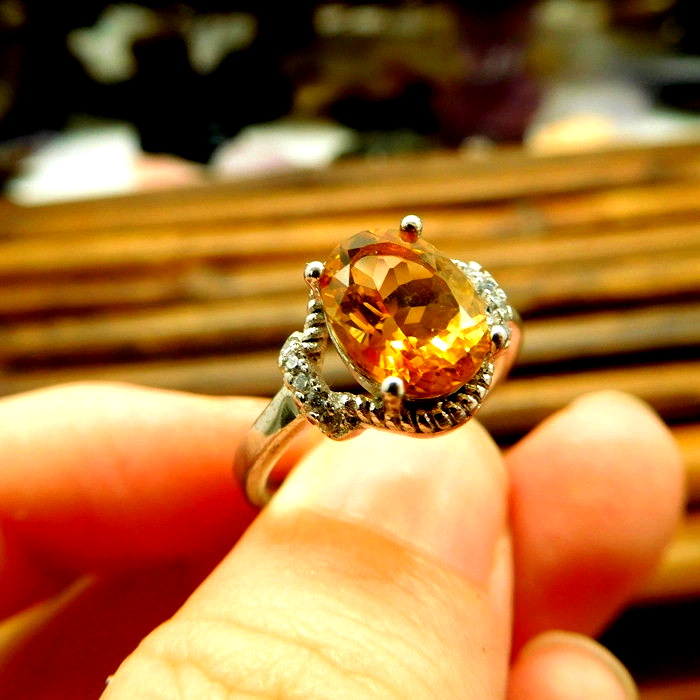 Pictured above: Yellow topaz ring
Pictured above: Yellow topaz ring
Ready to Navigate the World of November Birthstones?
November is a time of transition, from warmth to chiller weather and shorter days. But as Henry David Thoreau said, “perhaps [November’s] harvest of thought is worth more than all the other crops of the year.”
Topaz and citrine are wonderful gems for appreciating that harvest of thought, being surrounded by loved ones, and being born in this colorful time of year.
Find traditional and alternative November birthstones from our hundreds of gemstones available!
Search the Gemstone Encyclopedia
Related Auctions
Related Articles
Originally the Birthstones or gemstones were associated with a zodiac sign or the month of a individuals birth. Find out what your stone is and view the stones we have for sale
8th Feb 2021
Azotic treatment of Topaz and Quartz is a treatment that creates a layer of color over a gemstone. Learn more about this treatment and check out our stones fro sale.
8th May 2018
There are dozens of quartz and chalcedony gems with various colors and patterns. Learn all about quartz properties and every type of quartz, from amethyst and agate to plasma and phantom quartz!
15th Oct 2020
Latest Articles
Tantalite is a group of red, brown, or black minerals containing the rare and valuable element tantalum. Discover the uses, history, prices, and properties of tantalite gemstones in this guide!
11th Nov 2024
Hodgkinsonite is a very rare collector’s gemstone known for its vibrant pink or purple hues, only found in New Jersey, USA. Learn hodgkinsonite’s prices, history, properties, and traits in this guide!
9th Jun 2024
Canasite is a rare mineral usually found as greenish-yellow inclusions in charoite but also known as a purple gemstone. Learn canasite’s history, varieties, properties, and prices in this guide.
27th May 2024
Article Categories
How To's is where you will find helpful articles from gem Rock Auctions on how to cut gemstones, select gemstones and buy gemstones.
9 Articles






